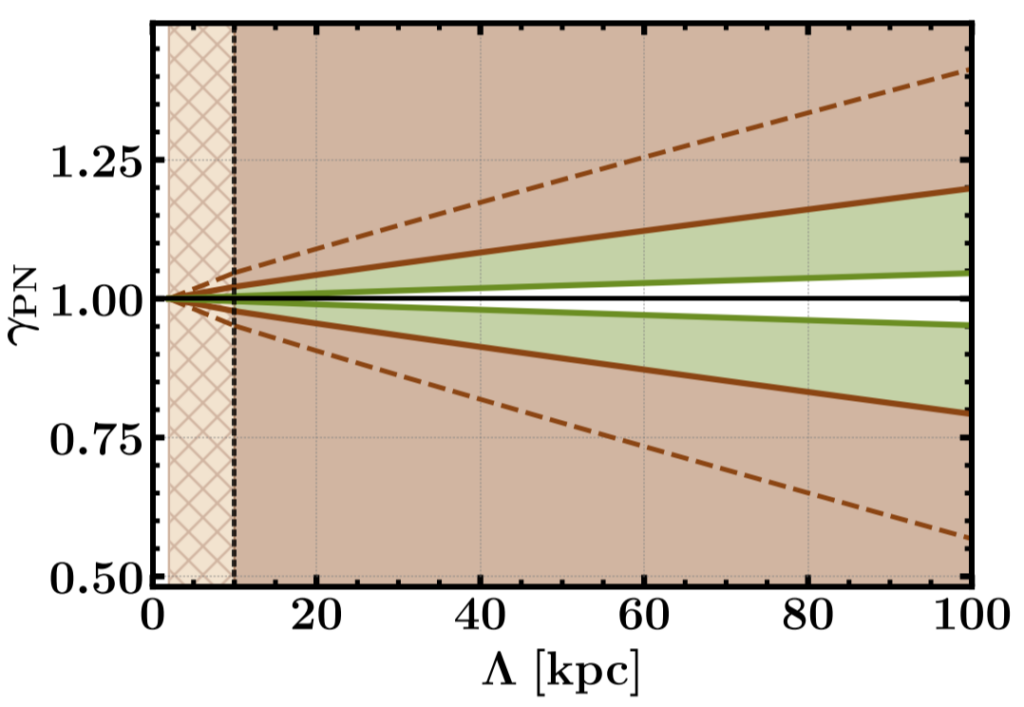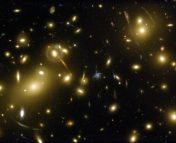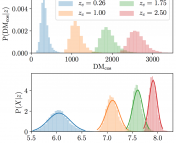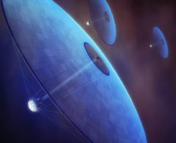Title: “Probing Gravitational Slip with Strongly Lensed Fast Radio Bursts”
Authors: Tal Abadi and Ely D. Kovetz
First Author’s Institution: Department of Physics, Ben-Gurion University of the Negev, Be’er Sheva 84105, Israel
Status: open access on arXiv
Was Einstein wrong about gravity?
In 1998, two teams of astronomers observing distant stellar explosions discovered that not only is our Universe expanding, but that — against all physical intuition — it’s expanding faster and faster over time. Sure enough, dozens of follow-up measurements over the last twenty years have unambiguously confirmed that the Universe’s expansion is accelerating. From a theoretical perspective, however, we have no clue why this is happening.
Reassuringly, this astronomical gap in knowledge has not discouraged the theorists from theorizing — and, believe me, we certainly have no dearth of theoretical models describing the accelerating Universe. Based on their proposed source of acceleration, these models can be grouped into two broad categories: dark energy theories and modified gravity theories. Dark energy models posit that some mysterious unidentified force permeates the Universe, exerting a “negative pressure” on the vacuum of space that acts to push everything apart. Meanwhile, instead of appealing to some mystical source of universal energy, modified gravity models suggest (as the name would imply) that gravity itself behaves differently on extreme scales, perhaps interacting with matter and light in such a way as to compel space to accelerate in regimes yet unexplored by astrophysicists.
While the corpus of modified gravity theories varies substantially, nearly every model shares two key parameters. First, the screening radius quantifies the distance scale on which altered gravity is important: for distances within the screening radius, Einstein’s general relativity — the current standard model of gravitation — accurately applies, while for distances beyond the screening radius, the effects of modified gravity start to take hold. Second, the gravitational slip quantifies the extent to which the theory deviates from our standard understanding of gravity. A little more precisely, the gravitational slip is the ratio of the strength of gravity’s influence on light to the strength of gravity’s influence on matter; in Newton’s theory of gravity (where gravity doesn’t interact with light) the gravitational slip is zero, while in general relativity (where light and matter are treated on equal footing) the gravitational slip is one. Therefore, a slip parameter deviating from one indicates the presence of new non-standard physics. Constraining the gravitational slip can thus rule out various models of modified gravity (or rule out modified gravity entirely, if the slip is shown to exactly equal one) — and that’s precisely what today’s paper seeks to do.
Peering through a gravitational lens
Well, then, how does one actually measure the gravitational slip? Naturally, we need some way of probing gravity at its most extreme — for this, the authors turn to strong gravitational lensing, or the bending of light around a concentrated clump of mass (the “gravitational lens”), like a galaxy or galaxy cluster. Photons from the same background source that are deflected in different directions by a gravitational lens will reach an observer at slightly different times, yielding the so-called lensing time delay; this occurs because photons are slowed down by matter along their direction of propagation, so two photons traveling along two unique paths will necessarily run into different gravitational roadblocks (assuming space isn’t exactly uniform). Serendipitously, this time delay — a readily observable and measurable quantity — depends on (among other parameters) the gravitational slip!
Previous work has examined the viability of using strongly-lensed quasars to constrain the gravitational slip, finding that these constraints are limited by an uncertainty of at least 1% on the measured quasar time delay. Today’s paper instead proposes the use of strongly-lensed fast radio bursts (FRBs) — extremely bright pulses of radio waves lasting mere milliseconds — to obtain these constraints. While the origins of FRBs are still not completely understood, a number of these bursts have been detected in repeating patterns, allowing them to be traced back to specific sources. Provided that we can accurately localize the source of a repeating strongly-lensed FRB, the exceedingly short durations of the pulses should allow for unprecedentedly precise measurements of the lensing time delay.
FRBs in slippery simulations
Since we have yet to actually observe a strongly-lensed FRB, the authors use simulations to predict how a strongly-lensed FRB system might behave. The properties of the FRB sources are taken from the CHIME catalog, and the gravitational lenses are modeled as massive dark matter halos, with distances chosen to maximize the probability that an FRB pulse is strongly lensed. For a given screening radius, the authors are thus able to extract the value of the gravitational slip from the simulated time delay measurement.
The authors find that observing just ten strongly-lensed FRB events should allow one to place constraints on the gravitational slip that are roughly three times stronger than the corresponding constraints from ten strongly-lensed quasars. Figure 1 shows the constraining power of FRBs for a wide range of screening radii; for a screening radius of Λ = 100 kiloparsecs, ten FRBs would constrain the slip parameter γPN to within 1.00 ± 0.04!

As the Square Kilometer Array (SKA), the Hydrogen Intensity and Real-time Analysis eXperiment (HIRAX), and the Packed Ultra-wideband Mapping Array (PUMA) start collecting data over the coming decades — with each instrument promising to detect hundreds to thousands of FRBs every day — we are sure to enter a golden age of FRB-guided cosmology. Adding next-generation gravitational wave experiments like LISA into the mix, we’ll be able to probe gravity on scales previously untouched by astronomers. It’s only a matter of time before we find an explanation for our accelerating Universe. Until then, however, the true nature of gravity will continue to slip out of reach.
Astrobite edited by: Mitchell Cavanagh
Featured image credit: earthsky.org




